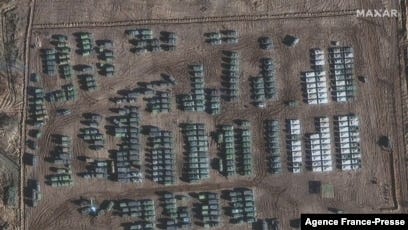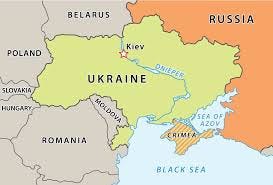
Russian aggression along the Ukrainian border has led to the United States taking precautionary steps with regards to the family members of its Embassy staff. The U.S. ordered the departure of family members of U.S. government employees at the U.S. Embassy in Kyiv, Ukraine, while also authorizing the voluntary departure of government employees. According to the State Department, the reason for this decision comes from an abundance of caution due to continued Russian efforts to destabilize Ukraine and undermine the security of Ukrainian citizens. The State Department also declared that the U.S. would be unable to evacuate U.S. citizens in the event of a Russian invasion of Ukraine.
“I think this a prudent step…a step that will still allow the Embassy to do its job,” said veteran diplomat and former U.S. Ambassador to Ukraine William Taylor regarding the evacuation. In an interview with NBC News, Taylor emphasized that the U.S. should be prepared for Russian President Vladimir Putin to “make a bad decision” that puts the lives of Russian soldiers and Ukrainian citizens at risk. President Biden highlighted the threat posed by a Russian invasion stating that, “If he were to move in with all those forces, it would be the largest invasion since World War II. It would change the world.”

Taking the precautionary step of evacuating the Ukrainian Embassy demonstrates that the Biden Administration does not want to repeat the mistakes of the U.S. withdrawal from Afghanistan, when U.S. personnel evacuated as the Taliban entered into Kabul. The Afghanistan evacuation led to the introduction of 1,000 new U.S. troops. Avoiding this type of disaster is wise; however, it does not diminish the threat Putin poses to Ukraine and the non-evacuated U.S. citizens living there still remain. Providing additional resources to assist with this evacuation, such as emergency visas and transportation vehicles, could help both U.S. and Ukrainian citizens escape a possible war-zone. This humanitarian focus corresponds with the interests of the U.S. since these citizens can be better protected outside of Ukraine and diplomatic proceedings between Russia and Ukraine can be further pursued without U.S. citizens being at risk.
Russia has been attempting to bring Ukraine into its sphere of influence ever since the fall of the Soviet Union; however, Ukraine has aligned itself more closely to NATO during this time. Russia previously invaded the former Soviet state of Georgia in 2008 to support South Ossetia and Abkhazian separatists and invaded the Ukrainian territory of Crimea in 2014 in order to, as Putin stated during an interview, “ensure proper conditions for the people of Crimea to freely express their will.” Political pressures in Russia, such as protests against the arrest of opposition leader Alexei Navalny in 2021 and NATO’s post-Cold War enlargement in the former Soviet states Estonia, Latvia and Lithuania, are cited as reasons for Russian aggression in these regions. Both explain Russia’s aggression towards Ukraine, despite the self-determinist terms Putin may present.
Invading Ukraine seems to be an unlikely and irrational venture for Putin when considering the diplomatic and economic isolation it would cause for Russia. Sanctions imposed by Western governments after the invasion of Crimea have hurt the Russian economy, and the U.S. and its allies are planning a ban on tech exports. However, an invasion cannot be ruled out due to Putin’s notoriously unpredictable and deceptive foreign policy. The U.S. should therefore protect its citizens and give Ukrainians an opportunity to escape by providing visas and means of transportation out of Ukraine. The State Department acknowledged that the U.S. would “not be in a position” to evacuate U.S. citizens in the event of an invasion. This fact must change in order to best protect the lives of Ukrainians and Americans alike.
















